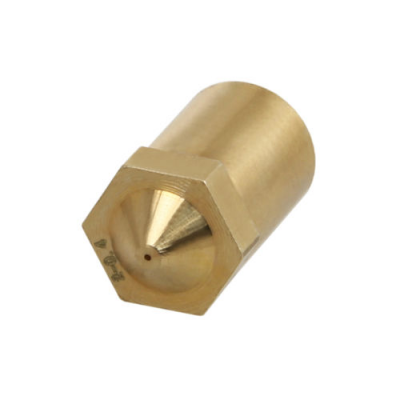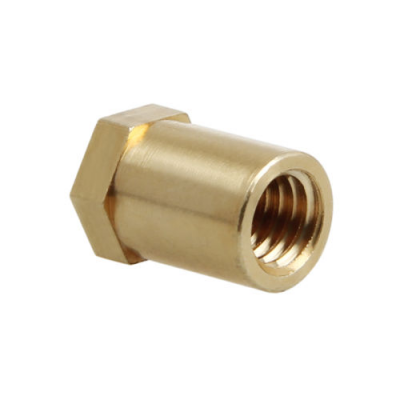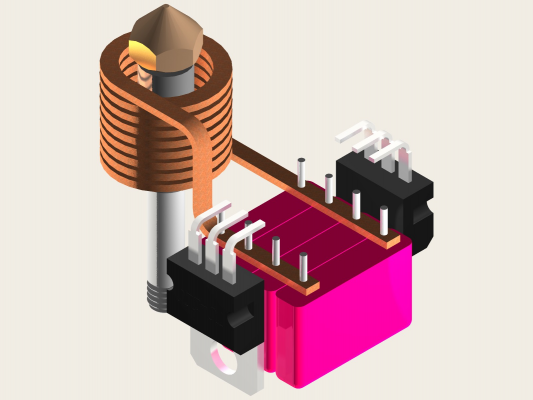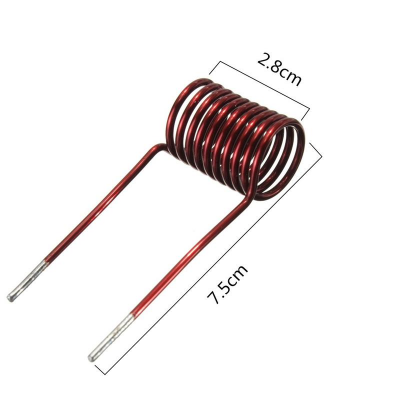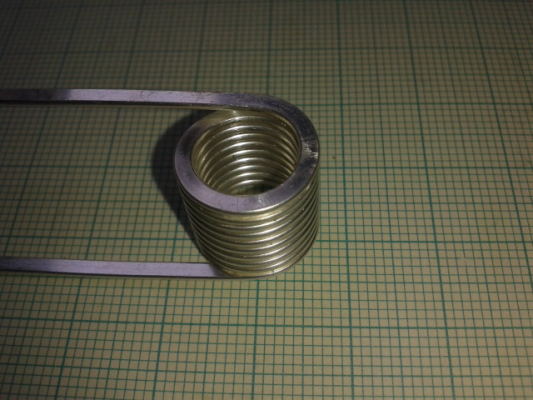Induction heater
Posted by newbob
|
Induction heater May 07, 2017 10:36AM |
Registered: 7 years ago Posts: 270 |
From what I can tell hot end design have not progressed much, especially on hobby printers. I think inductive heater would increase precision, control and maybe speed of melting filament, especially for multicolor printing, but I don't see any development in this area. Here's an interesting induction heater used for FDM:
https://youtu.be/im-OYObxMdM
https://youtu.be/im-OYObxMdM
|
Re: Induction heater May 07, 2017 07:56PM |
Admin Registered: 13 years ago Posts: 6,998 |
really....
see [reprap.org]
no not changed much at all....
and from 2009 [builders.reprap.org]
Edited 2 time(s). Last edit at 05/07/2017 08:01PM by Dust.
see [reprap.org]
no not changed much at all....
and from 2009 [builders.reprap.org]
Edited 2 time(s). Last edit at 05/07/2017 08:01PM by Dust.
|
Re: Induction heater May 08, 2017 08:46AM |
Registered: 7 years ago Posts: 270 |
Quote
Dust
really....
see [reprap.org]
no not changed much at all....
and from 2009 [builders.reprap.org]
I've seen those links before posting. And yes, I think they are (with few exceptions) variation of the same theme. One of the biggest issues I see is that most nozzles are heated via threaded connection which we know is not made for high part to part contact. Threaded couplings fail to deliver enough heat to the nozzle while printing fast and while they may work up to 60mm/s they fail at 100mm/s and higher.
What's worse,those threaded nozzle designs deliver as much heat to the nozzle as to the throat so when you send more heat for faster speeds you also have to beef-up your heat brake cooling at the same time.
Edited 1 time(s). Last edit at 05/08/2017 08:50AM by newbob.
|
Re: Induction heater May 08, 2017 09:08AM |
Registered: 12 years ago Posts: 1,450 |
I have recently made a first attempt at induction heating with mixed results. On the downside it seems to be hard to get a short thermal break with a stainless steel tube: I think that there will have to be an electrical insulator such as glass there - not so easy to make. On the upside, my nozzles have a female thread so the inductive heating goes right to the end and thermal control should be better.
I may try to work with coil shape or possibly a slug of magnetic stainless steel shrunk onto a non-magnetic tube but I am feeling a bit pessimistic about getting a short thermal break in any simple manner.
Mike.
I may try to work with coil shape or possibly a slug of magnetic stainless steel shrunk onto a non-magnetic tube but I am feeling a bit pessimistic about getting a short thermal break in any simple manner.
Mike.
|
Re: Induction heater May 08, 2017 09:35AM |
Registered: 7 years ago Posts: 270 |
Quote
leadinglights
I have recently made a first attempt at induction heating with mixed results. On the downside it seems to be hard to get a short thermal break with a stainless steel tube: I think that there will have to be an electrical insulator such as glass there - not so easy to make. On the upside, my nozzles have a female thread so the inductive heating goes right to the end and thermal control should be better.
I may try to work with coil shape or possibly a slug of magnetic stainless steel shrunk onto a non-magnetic tube but I am feeling a bit pessimistic about getting a short thermal break in any simple manner.
Mike.
I think nozzles, made of stainless steel, with female thread are the way to go. Have you considered using throat made with material of low permeability such as brass?
Edit: from what I read only 301, 321 and 347 stainless steel have higher permeability, 100x higher than most common 304 SS.
Edited 3 time(s). Last edit at 05/08/2017 09:52AM by newbob.
|
Re: Induction heater May 08, 2017 11:10AM |
Registered: 12 years ago Posts: 1,450 |
I will confess to having no more than a tenuous grasp of how induction heating works. If it was just eddy currents then most conductive materials should get hot - the few explanations why it is not eddy currents talk about hysteresis loss, but the old high permeability materials I was familiar with such as mu-metal have very narrow bh loops. Finding the "right" stainless and silver soldering it to the "wrong" stainless steel may work.
Mike
Mike
|
Re: Induction heater May 08, 2017 11:30AM |
Registered: 11 years ago Posts: 5,780 |
What is the advantage of induction heating over resistive heating that justifies its greater cost and complexity? How does the reliability compare?
Ultra MegaMax Dominator 3D printer: [drmrehorst.blogspot.com]
Ultra MegaMax Dominator 3D printer: [drmrehorst.blogspot.com]
|
Re: Induction heater May 08, 2017 12:53PM |
Registered: 7 years ago Posts: 270 |
Quote
the_digital_dentist
What is the advantage of induction heating over resistive heating that justifies its greater cost and complexity? How does the reliability compare?
I think inductive hotend would have similar advantages to electric stoves - higher efficacy and better heat control. From what I calculate all we need is 10W to melt PLA at 100mm/s speed. If heat losses were better controlled I suppose one could melt plastic even w/o using a temperature probe.
Quote
leadinglights
I will confess to having no more than a tenuous grasp of how induction heating works. If it was just eddy currents then most conductive materials should get hot - the few explanations why it is not eddy currents talk about hysteresis loss, but the old high permeability materials I was familiar with such as mu-metal have very narrow bh loops. Finding the "right" stainless and silver soldering it to the "wrong" stainless steel may work.
Mike
I probably know even less... Here a relevant quote from wikipedia:
"Skin depth also varies as the inverse square root of the permeability of the conductor. In the case of iron, its conductivity is about 1/7 that of copper. However being ferromagnetic its permeability is about 10,000 times greater. This reduces the skin depth for iron to about 1/38 that of copper, about 220 micrometres at 60 Hz. Iron wire is thus useless for A.C. power lines (except to add mechanical strength by serving as a core to a non ferromagnetic conductor like aluminum). The skin effect also reduces the effective thickness of laminations in power transformers, increasing their losses.
Iron rods work well for direct-current (DC) welding but it is impossible to use them at frequencies much higher than 60 Hz. At a few kilohertz, the welding rod will glow red hot as current flows through the greatly increased A.C. resistance resulting from the skin effect, with relatively little power remaining for the arc itself. Only non-magnetic rods can be used for high-frequency welding."
At first I thought that more iron the better, however considering other factors, such as conductivity and frequency - permeability between different SS types probably does not matter as much when compared to permeability/conductivity between brass and (any) SS, for example (especially at higher frequencies).
In summary it maybe just fine to use any SS nozzle with brass throat. SS nozzle and PEEK throat would be an interesting idea for PLA.
PS.: if SS nozzle is not available than probably this nozzle would work well:
Edited 1 time(s). Last edit at 05/08/2017 01:15PM by newbob.
|
Re: Induction heater May 08, 2017 03:04PM |
Registered: 12 years ago Posts: 1,450 |
Quote
newbob
.......................................
Skin depth also varies as the inverse square root of the permeability of the conductor. In the case of iron, its conductivity is about 1/7 that of copper. However being ferromagnetic its permeability is about 10,000 times greater. This reduces the skin depth for iron to about 1/38 that of copper, about 220 micrometres at 60 Hz. Iron wire is thus useless for A.C. power lines (except to add mechanical strength by serving as a core to a non ferromagnetic conductor like aluminum). The skin effect also reduces the effective thickness of laminations in power transformers, increasing their losses.
That single quote from Wikipedia not only gives me a beginning of an understanding of how, but also a bit of a feeling for scale. I am away from my workshop and software* for a while but think I have a way of getting a decently short thermal break.
On the nozzles I made up a good number of nozzles with a 4mm female thread which I use but they give a 4C ot 8C drop in temperature on my resistance heated hotends. I had planned to change my design for male threaded but they should work well with inductance heating. Picture of nozzles on [forums.reprap.org]
Mike
* On a nice but unfamiliar Chromebook at the moment.
|
Re: Induction heater May 15, 2017 11:16AM |
Registered: 7 years ago Posts: 270 |
I've done some more reading and I think I'll go with horseshoe inductor positioned on two sides of the nozzle instead of trying to squeeze enough coil around it. I'm also looking at ways of focusing the magnetic flux to direct it precisely at the end of the nozzle where I think it should be (I maybe wrong and may get oozing and not enough melting speed but I'm curious the outcome).
|
Re: Induction heater May 15, 2017 12:32PM |
Registered: 12 years ago Posts: 1,450 |
Quote
newbob
I've done some more reading and I think I'll go with horseshoe inductor positioned on two sides of the nozzle instead of trying to squeeze enough coil around it. I'm also looking at ways of focusing the magnetic flux to direct it precisely at the end of the nozzle where I think it should be (I maybe wrong and may get oozing and not enough melting speed but I'm curious the outcome).
I will be interested to see how that comes out, I have seen similar inductors for heating frozen bolts and for induction hardening instrument components.
I am presently exploring a possible answer to joining a high permeability mild steel heatable part to a very low permeability austenitic stainless steel part by friction welding. A good demo on [www.youtube.com] This may give us the ability to have the needed short transition between the hot and cold sides of the hotend.
Mike
|
Re: Induction heater May 16, 2017 07:57AM |
Registered: 8 years ago Posts: 312 |
Nice idea!
Will not necessarily make it lighter, but will make it better to control.
And generating the heat exactly where we need it is perfect. I can see a whole range of experiments opening up, like, what is the optimal distance from the nozzle tip to put the heat. Things that are not possible with a heating element.
Composite nozzles, made of different materials to focus the heat and the cooling to where it is needed.
Lykle
Will not necessarily make it lighter, but will make it better to control.
And generating the heat exactly where we need it is perfect. I can see a whole range of experiments opening up, like, what is the optimal distance from the nozzle tip to put the heat. Things that are not possible with a heating element.
Composite nozzles, made of different materials to focus the heat and the cooling to where it is needed.
Lykle
|
Re: Induction heater May 16, 2017 10:21AM |
Registered: 12 years ago Posts: 1,450 |
Friction welding in a cheap 10 inch lathe seems not to be a practical proposition as the tailstock and drill chuck construction is not rigid enough - it is hard to keep the two rods that you are attempting to weld together in line. I have managed one fairly strong weld and about a dozen complete failures. Since my lathe is somewhat better set up than they come from the shops I am no longer optimistic about friction welding.
I will try to give a bit of background heat from an induction heater in the hopes that this will reduce the end load from friction but that will need something a touch more powerful than my first assay at making a Royer oscillator. To this end I have sent for a couple of 120W induction heaters from Amazon.
It would be philosophically satisfying to use the same induction heater both to make its own (insert name for heater tube bit) and then do the heating for printing; but at the moment I am "Plan B"ing and back-peddling at the same time.
Mike
I will try to give a bit of background heat from an induction heater in the hopes that this will reduce the end load from friction but that will need something a touch more powerful than my first assay at making a Royer oscillator. To this end I have sent for a couple of 120W induction heaters from Amazon.
It would be philosophically satisfying to use the same induction heater both to make its own (insert name for heater tube bit) and then do the heating for printing; but at the moment I am "Plan B"ing and back-peddling at the same time.
Mike
|
Re: Induction heater May 16, 2017 11:43AM |
Registered: 7 years ago Posts: 270 |
|
Re: Induction heater May 16, 2017 03:15PM |
Registered: 7 years ago Posts: 249 |
I see induction heater as a valid alternative to cartridge heaters.
What most people miss is that current coils are built to deliver over 1000 degrees C. Totally over-kill for melting filament.
Smaller, lighter weight coils, with smaller capacitors could be used to produce 500 degrees C or less, and offer more control over selected melt temperatures.
More experimentation and prototyping may result in a favorable solution applicable for 3d printing.
Using single piece nozzle, like the Prometheus, would be a good choice to start with, and help isolate the melt zone, and create a more compact assembly.
Would be a fun project.
What most people miss is that current coils are built to deliver over 1000 degrees C. Totally over-kill for melting filament.
Smaller, lighter weight coils, with smaller capacitors could be used to produce 500 degrees C or less, and offer more control over selected melt temperatures.
More experimentation and prototyping may result in a favorable solution applicable for 3d printing.
Using single piece nozzle, like the Prometheus, would be a good choice to start with, and help isolate the melt zone, and create a more compact assembly.
Would be a fun project.
|
Re: Induction heater May 16, 2017 04:15PM |
Registered: 12 years ago Posts: 1,450 |
That is an instructive video but with care an inductive heater can be made with only a modicum of electronic knowledge. The main "gotchas" are that the Royer circuit needs a fast switch on and that the the type of capacitor is very important. Having said that, for hotend use in a 3D printer it would be nice to drive it with the same PWM input as used with a resistive heater. To use a PWM, or even a bang-bang control will need the the oscillator to be switched on and off up to several times a second without locking up and may lead to white smoke, tears and the gnashing of teeth. To work with while I am evolving a circuit, I have ordered two of these from Amazon [www.amazon.co.uk] They are 120W which is two or three times more than a hotend needs but I will copy and modify shamelessly. More importantly they are only £5.38 each so if I fry them there will be little moaning.
Mike
Mike
|
Re: Induction heater May 16, 2017 06:41PM |
Admin Registered: 13 years ago Posts: 730 |
Just in case you guys are unaware of it, an induction heated hot end system is described in this thread from 2015:
Induction heating for 3D printer
Induction heating for 3D printer
|
Re: Induction heater May 17, 2017 12:13PM |
Registered: 7 years ago Posts: 270 |
Quote
leadinglights
That is an instructive video but with care an inductive heater can be made with only a modicum of electronic knowledge. The main "gotchas" are that the Royer circuit needs a fast switch on and that the the type of capacitor is very important. Having said that, for hotend use in a 3D printer it would be nice to drive it with the same PWM input as used with a resistive heater. To use a PWM, or even a bang-bang control will need the the oscillator to be switched on and off up to several times a second without locking up and may lead to white smoke, tears and the gnashing of teeth. To work with while I am evolving a circuit, I have ordered two of these from Amazon [www.amazon.co.uk] They are 120W which is two or three times more than a hotend needs but I will copy and modify shamelessly. More importantly they are only £5.38 each so if I fry them there will be little moaning.
Mike
...I ordered the same induction heater board. This board has two chokes, later I saw video where presenter claims that boards with single choke with midpoint are more stable. If you're looking for circuit diagrams - there's one in that video.
Analog is a cheap way to start testing but ultimately I think digitally controlled heater would be the way to go. From what I understand, in the video in my original post, author is using micro controller for the heater, probably similarly to this doc . Using uC has it's advantages as one can vary power by changing frequency of the circuit which should be much more precise and quicker.
|
Re: Induction heater May 17, 2017 03:04PM |
Registered: 12 years ago Posts: 1,450 |
Quote
newbob
............. I ordered the same induction heater board. This board has two chokes, later I saw video where presenter claims that boards with single choke with midpoint are more stable. .............
Possibly true, but on the two choke circuit I think the chokes can be at some distance from the oscillator and tank circuit so reducing moving weight at the hotend.
Quote
............ Analog is a cheap way to start testing but ultimately I think digitally controlled heater would be the way to go. From what I understand, in the video in my original post, author is using micro controller for the heater, probably similarly to this doc . Using uC has it's advantages as one can vary power by changing frequency of the circuit which should be much more precise and quicker.
I have often used small 6 or 8 pin PIC microcontrollers to replace things like 555 timer ICs where they are more accurate, cheaper and waaaaay cooler but I don't think that they offer any advantage over analogue techniques for hotend control - I may be wrong though.
Mike
|
Re: Induction heater May 18, 2017 07:11AM |
Registered: 12 years ago Posts: 1,450 |
So far all CAD and notes on scraps of paper and endless looking at similar exercises on Google and YouTube but I looks like it should be possible to get about 40W of power at the hotend. This design is to be used on my Hot Delta with a designed maximum enclosure temperature of 100C so many parts will need to be in a water cooled jacket.
The biggest problem at the moment is that few of the manufacturers of polyester capacitors give important data for this sort of use. It looks like a bit of "suck it and see" will be needed.
The size at the moment is under 30mm across the transistors and 35mm long from the end capacitor to the end of the coil - this will obviously increase with metalwork, tubework and connectors but feels to be a good start
Upside down view showing only the principal electronic parts and nozzle.
Also needed will be things like a PEEK coil support to stop the coil being squished and possibly some form of thermal insulation to lessen the work of the water cooling.
Mike
Edited 2 time(s). Last edit at 05/18/2017 07:45AM by leadinglights.
The biggest problem at the moment is that few of the manufacturers of polyester capacitors give important data for this sort of use. It looks like a bit of "suck it and see" will be needed.
The size at the moment is under 30mm across the transistors and 35mm long from the end capacitor to the end of the coil - this will obviously increase with metalwork, tubework and connectors but feels to be a good start
Upside down view showing only the principal electronic parts and nozzle.
Also needed will be things like a PEEK coil support to stop the coil being squished and possibly some form of thermal insulation to lessen the work of the water cooling.
Mike
Edited 2 time(s). Last edit at 05/18/2017 07:45AM by leadinglights.
|
Re: Induction heater May 18, 2017 09:43PM |
Registered: 7 years ago Posts: 62 |
|
Re: Induction heater May 19, 2017 03:46AM |
Registered: 12 years ago Posts: 1,450 |
@briangilbert
It may not add anything, this is only a guess as it is too early to get more than a feel for it but I think the total weight would be somewhere between the weight of a hotend with an aluminium block and one with a brass block.
Mike
Edited 1 time(s). Last edit at 05/19/2017 03:48AM by leadinglights.
It may not add anything, this is only a guess as it is too early to get more than a feel for it but I think the total weight would be somewhere between the weight of a hotend with an aluminium block and one with a brass block.
Mike
Edited 1 time(s). Last edit at 05/19/2017 03:48AM by leadinglights.
|
Re: Induction heater May 22, 2017 11:04AM |
Registered: 7 years ago Posts: 270 |
Considering that I want my coil to be 15mm tall I'm looking at multilayer coils, specifically double wound coil. According to calc below I'll need to reduce number of turns per layer to 4 to maintain same inductance.
Air coil calculator: [electronbunker.ca]
[www.tesla-institute.com]
Coil that comes with the heater:
Edited 6 time(s). Last edit at 05/22/2017 01:00PM by newbob.
Air coil calculator: [electronbunker.ca]
[www.tesla-institute.com]
Coil that comes with the heater:
Edited 6 time(s). Last edit at 05/22/2017 01:00PM by newbob.
|
Re: Induction heater May 22, 2017 11:48AM |
Registered: 12 years ago Posts: 1,450 |
@briangilbert, I have just wound a coil exactly per the CAD and it comes out to 7.6 grams so I think there need not be a weight penalty.
(Not the one I weighed as no dog-leg on one lead, but the other one was ugly)
Mike
Edited 3 time(s). Last edit at 05/23/2017 04:50AM by leadinglights.
(Not the one I weighed as no dog-leg on one lead, but the other one was ugly)
Mike
Edited 3 time(s). Last edit at 05/23/2017 04:50AM by leadinglights.
|
Re: Induction heater May 23, 2017 05:12AM |
Registered: 12 years ago Posts: 1,450 |
@newbob,
Thanks for the pointers to the inductance calculators, I found they gave a different value to the one that I had used. Your one was right and the inductance now comes out at 0.77microhenries - the other one (allaboutcircuits I think) said 1.92microhenries.
I have spend a bit of time browsing the web and even joined another forum [highvoltageforum.net] to get more background. The biggest worry is that the common circuits are all capable of stalling on power up - not a good thing if the is powered directly from the output of a controller as it may give several opportunities per second for the oscillator to stall and burn out.
Mike
Thanks for the pointers to the inductance calculators, I found they gave a different value to the one that I had used. Your one was right and the inductance now comes out at 0.77microhenries - the other one (allaboutcircuits I think) said 1.92microhenries.
I have spend a bit of time browsing the web and even joined another forum [highvoltageforum.net] to get more background. The biggest worry is that the common circuits are all capable of stalling on power up - not a good thing if the is powered directly from the output of a controller as it may give several opportunities per second for the oscillator to stall and burn out.
Mike
|
Re: Induction heater May 23, 2017 09:01AM |
Registered: 7 years ago Posts: 270 |
Quote
leadinglights
@newbob,
Thanks for the pointers to the inductance calculators, I found they gave a different value to the one that I had used. Your one was right and the inductance now comes out at 0.77microhenries - the other one (allaboutcircuits I think) said 1.92microhenries.
I have spend a bit of time browsing the web and even joined another forum [highvoltageforum.net] to get more background. The biggest worry is that the common circuits are all capable of stalling on power up - not a good thing if the is powered directly from the output of a controller as it may give several opportunities per second for the oscillator to stall and burn out.
Mike
Looking at reference designs for induction stoves they all use microcontroller/IC to regulate power and to keep heater working within design parameters. I think it would be best, once nozzle is proven to work, to have an induction circuit with a IC that can vary heater output power (instead of bang bang control) which would allow higher safety, very fast heatup times and lower temperature fluctuations.
I see many circuits using IRS2453 IC, such as this one
What are the dimensions of your coil?
Edited 2 time(s). Last edit at 05/23/2017 09:58AM by newbob.
|
Re: Induction heater May 23, 2017 10:25AM |
Registered: 12 years ago Posts: 1,450 |
Another possibility is to use a small MCU as an oscillator - perhaps with a bit of smarts like emergency shut down. Microchip has some 8 pin PIC 12 MCUs with complementary waveform generation which cost well under £1 each.
Coil is 14mm OD, 10mm ID and 12mm tall. Wound with 2mm x 0.9mm silver coated copper wire from The Scientific Wire Company
Mike
Coil is 14mm OD, 10mm ID and 12mm tall. Wound with 2mm x 0.9mm silver coated copper wire from The Scientific Wire Company
Mike
|
Re: Induction heater May 25, 2017 06:14PM |
Registered: 7 years ago Posts: 270 |
I managed to melt some PLA, however, coil got too warm too quickly, also stainless steel throat heated up much quicker than brass. What is encouraging is that this circuit did not use more than 30W and had no trouble heating up throat and nozzle inserted into the coil (SS throat used is slightly magnetic). Based on this quick test coil needs to be much smaller and stay cooler, plus throat needs to be made from non nonmagnetic material past the heat-brake (if still within coils range)
MOV_2.mp4
Edited 6 time(s). Last edit at 05/25/2017 07:44PM by newbob.
MOV_2.mp4
Edited 6 time(s). Last edit at 05/25/2017 07:44PM by newbob.
|
Re: Induction heater May 25, 2017 08:59PM |
Registered: 15 years ago Posts: 537 |
Hello,
The best chance for new hot-end technology, such as by using an induction heater, is in the hands of the hobbyist. The problem is that if somebody develops a new hot-end, it is copied by the chinese. Then, most people buy the cheap chinese copies. So, there is no incentive for a company to create an induction heater hot-end to add to china's profit margin. R&D costs money.
Given that the induction heater requires more electronics, people aren't going to want to pay for it, either.
Best Regards,
Brian
The best chance for new hot-end technology, such as by using an induction heater, is in the hands of the hobbyist. The problem is that if somebody develops a new hot-end, it is copied by the chinese. Then, most people buy the cheap chinese copies. So, there is no incentive for a company to create an induction heater hot-end to add to china's profit margin. R&D costs money.
Given that the induction heater requires more electronics, people aren't going to want to pay for it, either.
Best Regards,
Brian
Quote
newbob
From what I can tell hot end design have not progressed much, especially on hobby printers. I think inductive heater would increase precision, control and maybe speed of melting filament, especially for multicolor printing, but I don't see any development in this area. Here's an interesting induction heater used for FDM:
https://youtu.be/im-OYObxMdM
|
Re: Induction heater May 28, 2017 10:54AM |
Registered: 8 years ago Posts: 312 |
Quote
reifsnyderb
Given that the induction heater requires more electronics, people aren't going to want to pay for it, either.
If there is a clear benefit sure they will. And the costs can come down by quite a bit after the initial experimentation.
As to the clones, that should not be a reason to stop developing. E3D do it very successfully. Yes they are cloned, but I will still buy original.
Until we develop a better one.
I like the idea of induction heating. Makes sense. Put the energy where you need it, heat only that part you want hot. It is not a magical cure all, for sure, but it does need investigating.
Lykle
________________________________________________
Co-creator of the Zesty Nimble, worlds lightest Direct Drive extruder.
[zesty.tech]
Sorry, only registered users may post in this forum.
